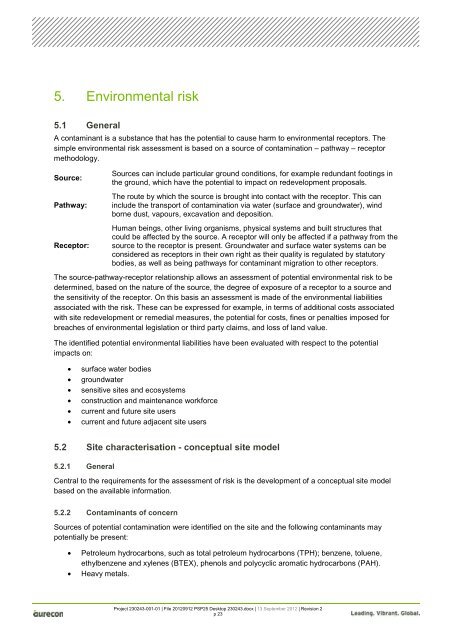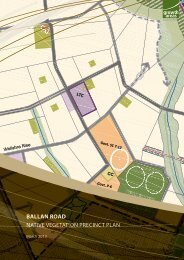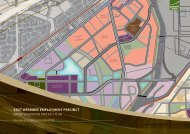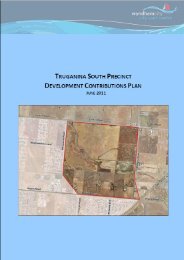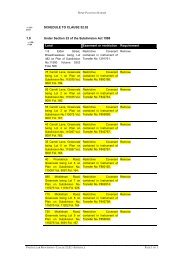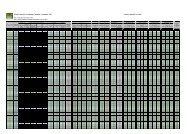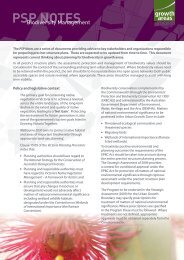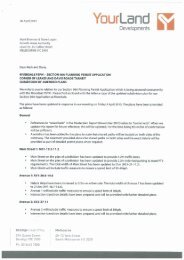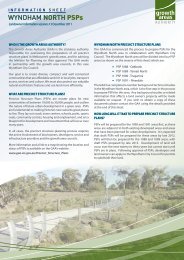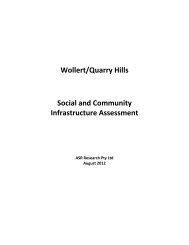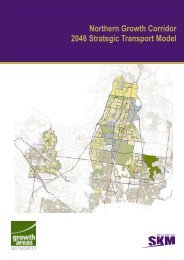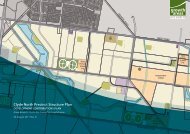Desktop Environmental, Hydrological and Geotechnical Study
Desktop Environmental, Hydrological and Geotechnical Study
Desktop Environmental, Hydrological and Geotechnical Study
Create successful ePaper yourself
Turn your PDF publications into a flip-book with our unique Google optimized e-Paper software.
5. <strong>Environmental</strong> risk<br />
5.1 General<br />
A contaminant is a substance that has the potential to cause harm to environmental receptors. The<br />
simple environmental risk assessment is based on a source of contamination – pathway – receptor<br />
methodology.<br />
Source:<br />
Pathway:<br />
Receptor:<br />
Sources can include particular ground conditions, for example redundant footings in<br />
the ground, which have the potential to impact on redevelopment proposals.<br />
The route by which the source is brought into contact with the receptor. This can<br />
include the transport of contamination via water (surface <strong>and</strong> groundwater), wind<br />
borne dust, vapours, excavation <strong>and</strong> deposition.<br />
Human beings, other living organisms, physical systems <strong>and</strong> built structures that<br />
could be affected by the source. A receptor will only be affected if a pathway from the<br />
source to the receptor is present. Groundwater <strong>and</strong> surface water systems can be<br />
considered as receptors in their own right as their quality is regulated by statutory<br />
bodies, as well as being pathways for contaminant migration to other receptors.<br />
The source-pathway-receptor relationship allows an assessment of potential environmental risk to be<br />
determined, based on the nature of the source, the degree of exposure of a receptor to a source <strong>and</strong><br />
the sensitivity of the receptor. On this basis an assessment is made of the environmental liabilities<br />
associated with the risk. These can be expressed for example, in terms of additional costs associated<br />
with site redevelopment or remedial measures, the potential for costs, fines or penalties imposed for<br />
breaches of environmental legislation or third party claims, <strong>and</strong> loss of l<strong>and</strong> value.<br />
The identified potential environmental liabilities have been evaluated with respect to the potential<br />
impacts on:<br />
• surface water bodies<br />
• groundwater<br />
• sensitive sites <strong>and</strong> ecosystems<br />
• construction <strong>and</strong> maintenance workforce<br />
• current <strong>and</strong> future site users<br />
• current <strong>and</strong> future adjacent site users<br />
5.2 Site characterisation - conceptual site model<br />
5.2.1 General<br />
Central to the requirements for the assessment of risk is the development of a conceptual site model<br />
based on the available information.<br />
5.2.2 Contaminants of concern<br />
Sources of potential contamination were identified on the site <strong>and</strong> the following contaminants may<br />
potentially be present:<br />
• Petroleum hydrocarbons, such as total petroleum hydrocarbons (TPH); benzene, toluene,<br />
ethylbenzene <strong>and</strong> xylenes (BTEX), phenols <strong>and</strong> polycyclic aromatic hydrocarbons (PAH).<br />
• Heavy metals.<br />
Project 230243-001-01 | File 20120912 PSP25 <strong>Desktop</strong> 230243.docx | 13 September 2012 | Revision 2<br />
p 23


